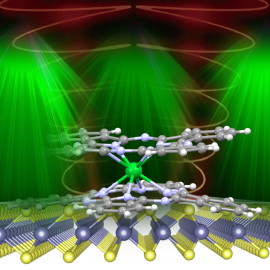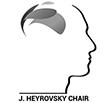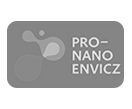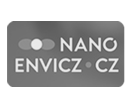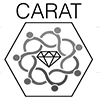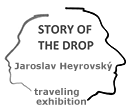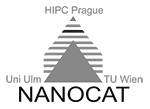New hybrid 2D material promises to improve optical devices and quantum computers
A new type of two-dimensional material that emits chiral light has been created by scientists at Faculty of Mathematics and Physics, Charles University, and the J. Heyrovsky Institute of Physical Chemistry of the Czech Academy of Sciences. The material with unique properties promises to improve information density in optical communication and enhance the polarization sensitivity of optical-electronic devices, displays, and sensors, which are required for next-generation computers. The experts published the study in the journal ACS Nano.
Light is an electromagnetic wave, used in electronic devices to transmit information, process signals, or communicate. In a basic optical communication circuit non-structured light is used. However, more information can be processed by polarized light. In general, polarization filters are used to obtain such polarized light which is challenging to miniaturize. A team of scientists from the J. Heyrovsky Institute of Physical Chemistry of the CAS and Faculty of Mathematics and Physics, Charles University, has created a unique ultrathin material that can self-polarize light.
"The beauty of the material is, it produces circularly polarized light even at room temperature, which holds promise for improving current information and quantum technologies," says Golam Haider of the J. Heyrovsky Institute of Physical Chemistry, who participated in the research.
They achieved this by placing a monolayer of magnetic molecules on top of a three-atom-thick single-layer molybdenum sulfide (MoS2). The layered hybrid works as an excellent polarized light emitter even in ambient conditions.
"Such unique material can be obtained by facile evaporation of the special magnetic molecules on the monolayer semiconductor," adds Martin Kalbáč from the J. Heyrovsky Institute of Physical Chemistry.
"We have demonstrated that this material is highly efficient and stable for months of operation, which is essential for practical applications,” says Vaibhav Varade of Faculty of Mathematics and Physics.
Further improvements to quantum technology
This only a few nm thin new materials produces circularly polarized light with a very high quantum yield which holds the promise to be used in miniaturized quantum optoelectronic circuits. The unusual effect has been explained by the experts from the theory group at the Department of condensed matter physics, Charles University.
"The exceptional optical properties are enabled by the energy drain between the magnetic molecules and 2D semiconductor, which persist down to low temperatures, where the quantum regime of the molecules occurs," adds Jana Vejpravová Kalbáčová from Charles University, who came up with the idea of spin hybrids based on magnetic molecules and 2D semiconductors in her ERC Starting grant TSuNAMI.
Thus, the scientists tested the new material at liquid helium temperatures (down to -269 °C) and in the presence of an external magnetic field. They, therefore, consider it very promising for areas such as opto-spintronics, valleytronics, and quantum communication.



